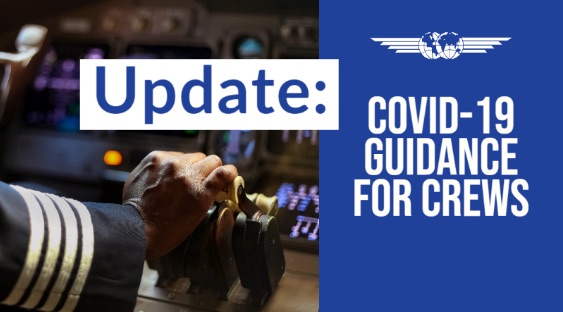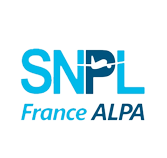Safety Bulletin:
COVID-19 Guidance for Crews (update 30 March)
![]()

20SAB04 – 30 March 2020 – Please note: this is an update to 20SAB04, originally published 23 March 2020.
At all times, crews should follow the advice of their health authorities and operators. The following is general advice about COVID-19 as understood at the date of publication.
The flight deck itself is seen as a safe place, provided appropriate hygienic measures are taken. This is because recirculated air passes through HEPA filters, which are used, for example, in operating theatres. Any infections caught in the aircraft would not come via recirculated air, but due to direct contact, or via droplets, i.e. if an infected person sneezes or coughs. It is currently believed that the virus can survive on surfaces for up to four days.
The COVID-19 virus is approximately 0.125 μm in diameter and it falls within the particle-size range that HEPA filters capture with a high level of efficiency.(1)
Crews should consider the following recommendations:
Before the Flight
• Crew planning should consider using crews as teams – this would restrict the potential infection only to the team members.
• Crews and other personnel with any symptoms of flu should not be working – this is to prevent potentially infected persons in the flight deck and thus prevent spread of the virus to surfaces of the flight deck.
• Procedures should be put in place to minimize crew exposure to ground personnel.
• All personnel should follow proper hygiene practices before entering the cockpit.
• During turn-around when pilots are in contact with ground personnel, a mask may be worn in high epidemic areas.
During the flight
• Disinfect all surfaces with alcohol wipes before starting your flight preparations.
• Use hand disinfection gel often, and always before eating anything.
• Avoid touching your face – eyes, nose, mouth.
• If routine use of OXY mask is required (such as for operations above a given Flight Level), use disinfection towel before and after the use of mask.
At layovers
• Do not use public transportation.
• Stay in your hotel room to the extent possible.
• Minimize going out into the general population and use social distancing (maintain a distance of approximately 2 meters if possible), whenever out in public. Avoid crowds, stores, and situations likely to attract large numbers of people.
• Eat in your hotel room with either room service or delivery service. If in-room dining options are not available, eat at a restaurant located in the hotel. If not available at the hotel, eat at a restaurant located close to the hotel.
• Wash your hands with soap and water for at least 20 seconds or use at least a 60% alcohol-based hand sanitizer often, and always after entering the hotel room or before eating.
There is little evidence that wearing a mask is effective in preventing healthy crew members from getting an infection. It is not recommend to fly with a mask. In addition, gloves do not prevent you touching your face and the infection can spread in a similar way as if you are not wearing gloves.
Crews should also consider the advice of the FAA and the WHO for minimising risk of infection while operating (This guidance was accessed on 20 March 2020 and should be checked against newer versions if available.):
* https://www.faa.gov/news/media/attachments/CDC%20FAA%20airline%20guidance.pdf
* https://apps.who.int/iris/bitstream/handle/10665/331488/WHO-2019-nCoV-Aviation-2020.1- eng.pdf
The need to self-isolate after flights needs to be decided by your authority. If a flight has no layover, it is not expected that there would be a need to self-isolate. For flights with a layover, the decisions will depend on the destination, risk of infection, and any exposure risks at the destination. Crews who secure private transportation, stay at the hotel, eat via room service, and maintain the social distance of 2 meters, can keep the risk of infection low.
(1) Submicron and Nanoparticulate Matter Removal by HEPA-Rated Media Filters and Packed Beds of Granular Materials, Page 7, https://ntrs.nasa.gov/archive/nasa/casi.ntrs.nasa.gov/20170005166.pdf
Télécharger la mise à jour du Safety Bulletin.
